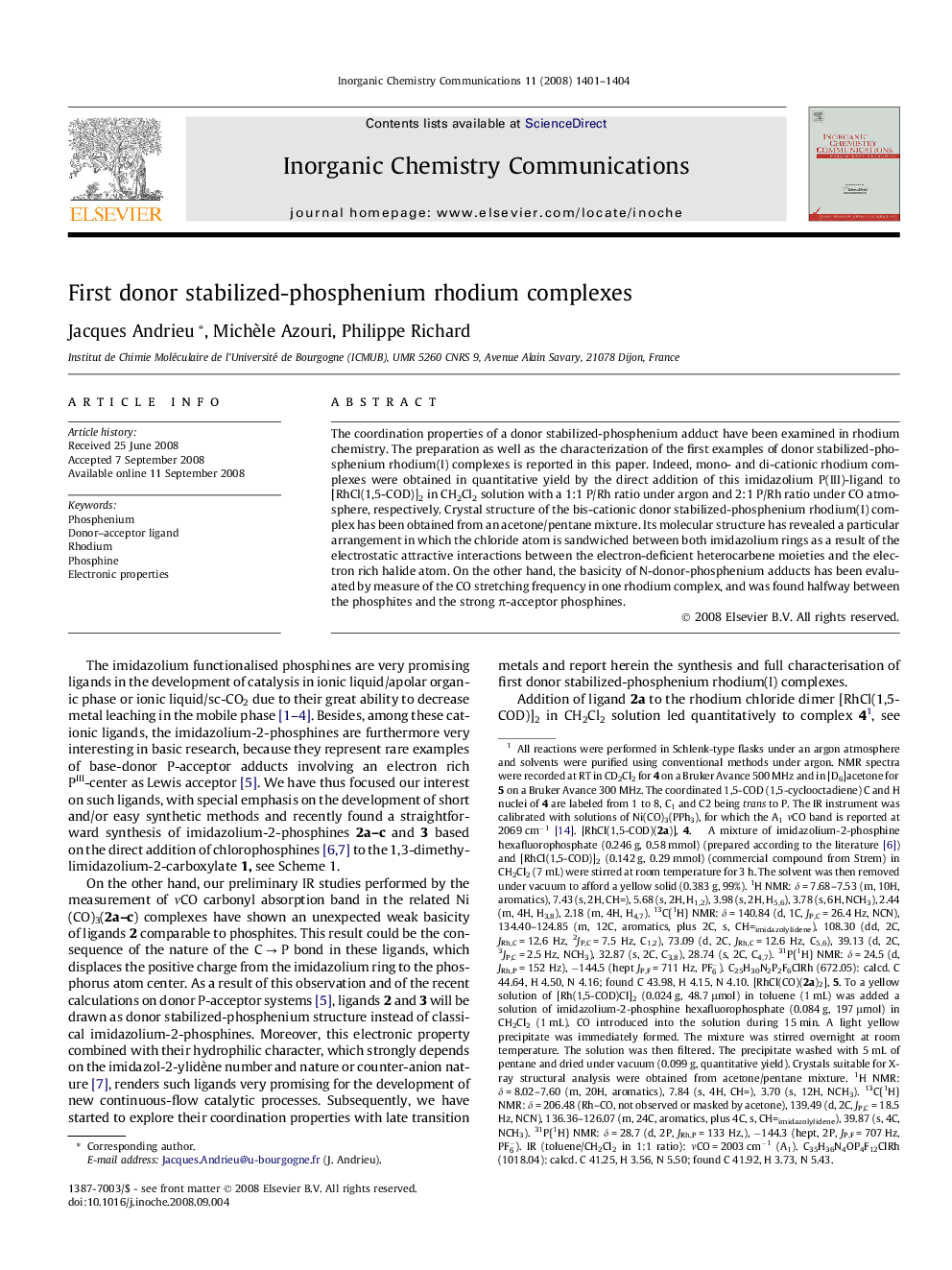| Article ID | Journal | Published Year | Pages | File Type |
|---|---|---|---|---|
| 1304587 | Inorganic Chemistry Communications | 2008 | 4 Pages |
The coordination properties of a donor stabilized-phosphenium adduct have been examined in rhodium chemistry. The preparation as well as the characterization of the first examples of donor stabilized-phosphenium rhodium(I) complexes is reported in this paper. Indeed, mono- and di-cationic rhodium complexes were obtained in quantitative yield by the direct addition of this imidazolium P(III)-ligand to [RhCl(1,5-COD)]2 in CH2Cl2 solution with a 1:1 P/Rh ratio under argon and 2:1 P/Rh ratio under CO atmosphere, respectively. Crystal structure of the bis-cationic donor stabilized-phosphenium rhodium(I) complex has been obtained from an acetone/pentane mixture. Its molecular structure has revealed a particular arrangement in which the chloride atom is sandwiched between both imidazolium rings as a result of the electrostatic attractive interactions between the electron-deficient heterocarbene moieties and the electron rich halide atom. On the other hand, the basicity of N-donor-phosphenium adducts has been evaluated by measure of the CO stretching frequency in one rhodium complex, and was found halfway between the phosphites and the strong π-acceptor phosphines.
Graphical abstractSynthesis of first donor stabilized-phosphenium rhodium complexes, which exhibit electrostatic interactions between the chloride atom and the imidazolium rings as well as a moderated basicity of the cationic P-ligand is described.Figure optionsDownload full-size imageDownload as PowerPoint slide
